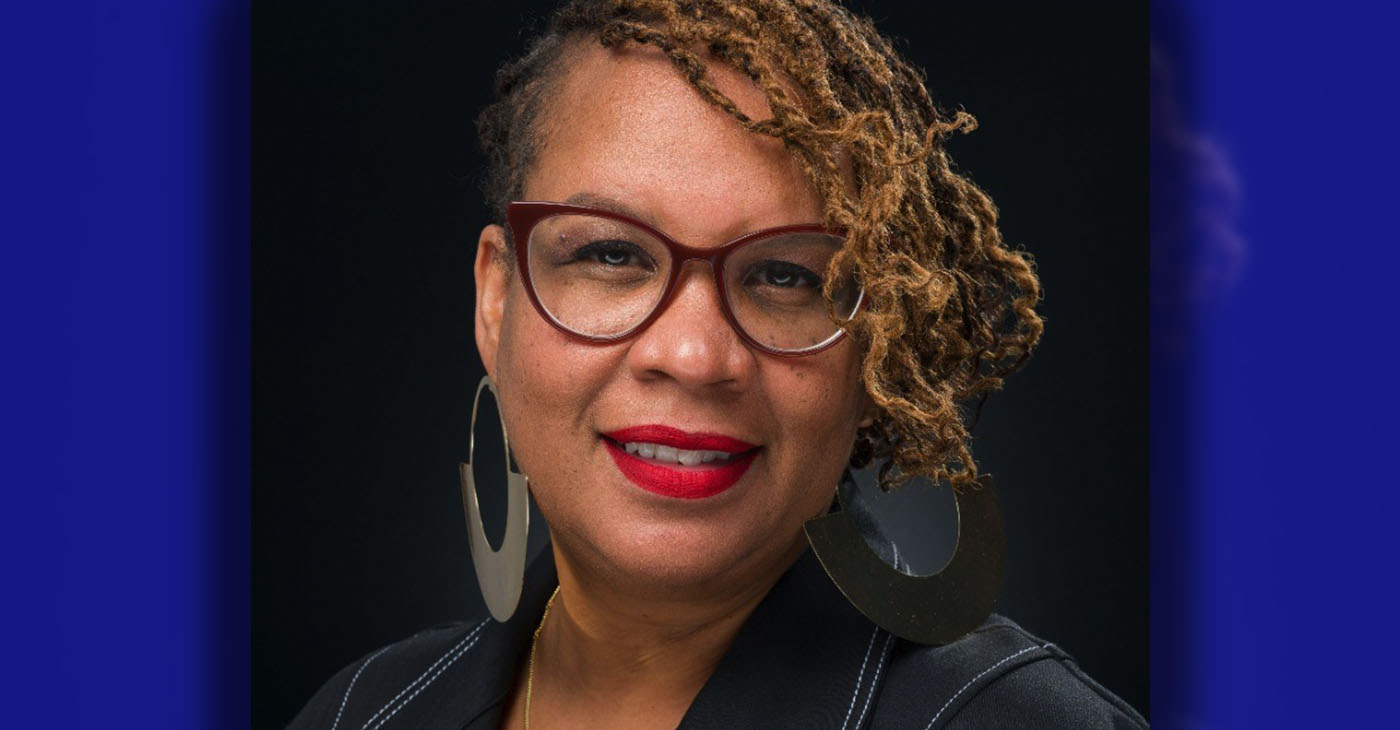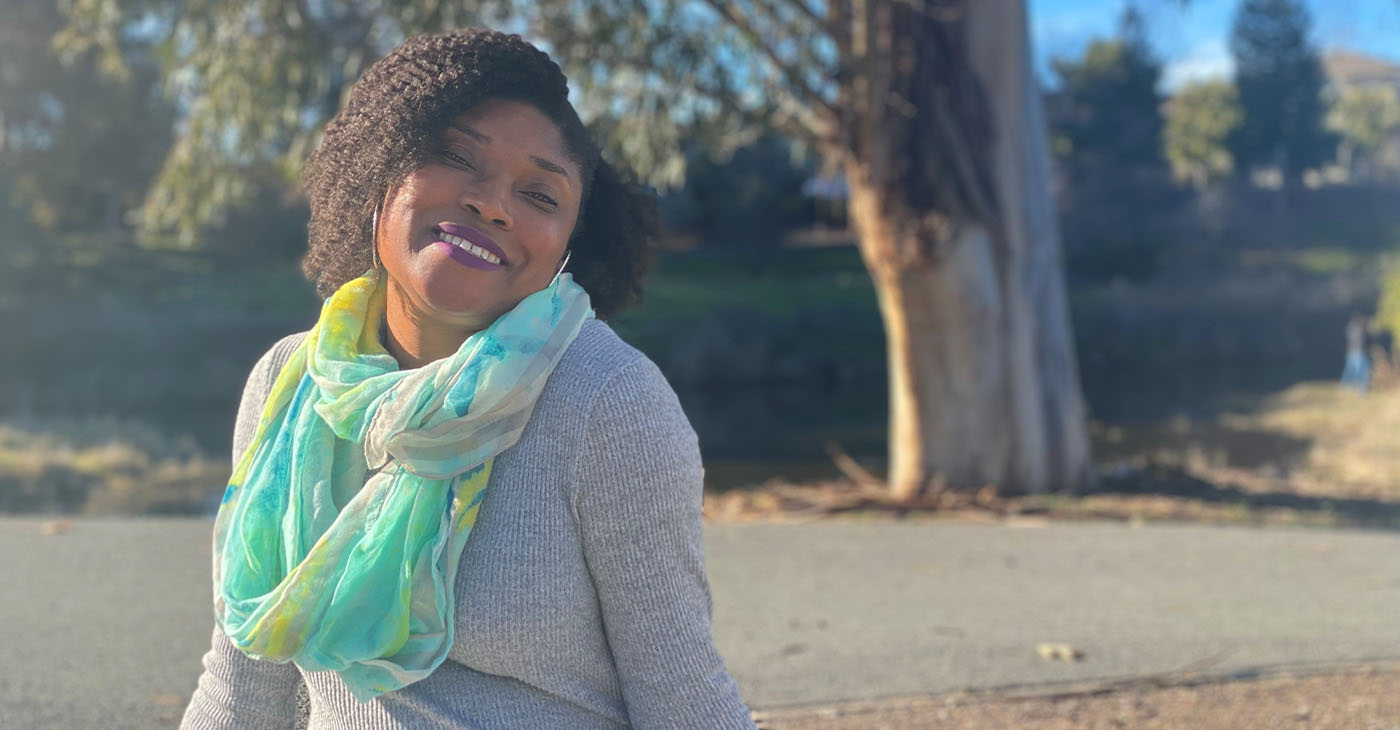Advice
Evangelical Technology: The New “E.T.”
In his book, “Branding Faith,” Phil Cooke wrote, “Whatever the purpose, the goal is to win the hearts and minds of the largest audience possible and imprint an indelible story around your church, ministry or mission.” In short Mr. Cooke is saying that how we tell our story and how our story looks, will determine the impact that we will have on a world in need of relevance.

By Curtis O. Robinson, Sr., M.A., Resident fellow ’19 Harvard Divinity School
The year was 1982 and Steven Spielberg released the blockbuster movie of the century entitled, “E.T., The Extra Terrestrial.” The movie outgrossed Star Wars and in 1983 grossed more than $359 million in North America and $619 million worldwide. Spielberg was making an estimated $500,000 a day, and the rest was cinematic history.
With the onslaught of the COVID-19 virus, the strain and challenge of presenting a relevant Christ to a culture in need of spiritual balance has been demanding. For the most part, houses of worship have had to close their doors. However, a few have been strategic enough to weather the storm with minimal attendance for in-house worship. So, it is still a daunting task to continue to get the Word of God to a culture desperately in need of spiritual enrichment.
In his book, “Branding Faith,” Phil Cooke wrote, “Whatever the purpose, the goal is to win the hearts and minds of the largest audience possible and imprint an indelible story around your church, ministry or mission.” In short Mr. Cooke is saying that how we tell our story and how our story looks, will determine the impact that we will have on a world in need of relevance.
Enter Nimbus Networks, LLC. Nimbus Networks is a certified solutions provider that creates tailored communications plans for you in collaboration with the world’s leading telecom providers.
We work with over 220 vetted worldwide carriers as a full-service technology consultant, and we have engineers who can help you design, deploy, and maintain your environment. Because no two organizations are the same, we tailor our Cloud, Voice, IT, and other technology services to match your unique requirements.
This is the first in a series of articles that will talk about the importance of having a reliable and robust IT platform. And for churches, we must still engage the world for Christ. It is important that our ET platform is effective and inviting. Stay tuned.
For more information concerning your IT or ET needs, you can reach him at crobinson@nimbusnet.net. You can also visit our website at nimbus-networks.com or you can call 925-285-8357 for a free consultation.
Curtis O. Robinson, Sr. is the senior pastor at the Faith Church in Oakland, CA. He is also managing director of Global Acquisitions at Nimbus Networks, LLC.
Advice
Mortgage Rates Are Dropping: What it Means for California Homeowners and Homebuyers
The Federal Reserve (the Fed), the U.S.’ central bank that dictates interest rates, continues to indicate that a potential rate cut is on the horizon. Not only can this impact affordability for prospective buyers, but it could be advantageous for current homeowners that are locked into higher interest rates. But, what does this all mean? Chase Bank answers some of your questions as it relates to prospective homebuyers and homeowners:

Sponsored by JPMorganChase
Homeownership is more than just a lofty American dream—it’s how many can build generational wealth. For the Black community, 90% of wealth gains come from homeownership, meaning that owning a home continues to be a crucial method for Black and Latino households to build and accumulate wealth.
The Federal Reserve (the Fed), the U.S.’ central bank that dictates interest rates, continues to indicate that a potential rate cut is on the horizon. Not only can this impact affordability for prospective buyers, but it could be advantageous for current homeowners that are locked into higher interest rates.
But, what does this all mean? Chase Bank answers some of your questions as it relates to prospective homebuyers and homeowners:
What role do interest rates play in buying a home?
Mortgages respond to market conditions, including the Fed’s monetary policy. As interest rates climb, so do the interest on new mortgages and mortgage payments. Conversely, if rates fall, so does the interest on mortgages. So, buying at a lower rate can save you money in mortgage payments.
Should I wait to buy a home once interest rates fall?
Timing the market perfectly is not only challenging, but near impossible to do. While we hope the Fed will cut rates this year, it’s never guaranteed. Lower interest rates can save you money, but they’re not the only factor affecting affordability. So, instead of focusing on perfectly timing the market, we recommend leaning into what you can control: being financially prepared to buy a home.
Outside of readying your finances for homeownership, you can look for options that can lower costs and promote savings such as low down payment mortgages, down payment assistance programs and grants. And don’t forget you always can buy a home now and refinance in the future once rates drop.
How do I prepare myself to buy a home in this current environment?
We not only want consumers to attain homeownership but to sustain it. That’s why it’s important to understand what exactly you can afford before getting into the market. There are a variety of resources to help you prepare financially for buying a home to see how much you can afford in the areas you’re looking to buy, compare loan options and obtain a free credit score. You’ll also want to start compiling all of your necessary documents for pre-approval, such as W2s, bank statements, income documentation, etc.
What about the down payment? Do I need to have 20% of the home cost saved up?
Most first-time home buyers are singularly focused on saving for a down payment. However, long gone are the days of putting down 20% of the purchase price – low down payment loan options are available with some requiring as low as 3% down. Plus, there are a variety of incentives and grants that can lower your costs. For instance, Chase offers a homebuyer grant of up to $7,500, where eligible, to help with the interest rate, closing costs, and the down payment. These grants are offered in low- to moderate-income communities and neighborhoods that are designated by the U.S. Census as majority-Black, Hispanic and/or Latino.
Should I only work with one lender for my mortgage?
Studies show that 45% of borrowers who shopped around for mortgages received lower offers. Make lenders compete for your business – many have varying fees and closing costs that can add up. Also, interest rates can fluctuate daily, so lock in your rate with your lender if they offer that option for extra peace of mind.
I’m an existing homebuyer. How does a rate cut impact my situation?
It can be a good time to refinance when interest rates are going down, especially for those with rates above or at 7%. For current homeowners looking to refinance, we advise them to keep their end goal in mind as they consider whether refinancing makes sense for their personal situation. Work with your local advisor or using a Refinance Savings Calculator to understand when it makes sense for your specific situation to refinance.
Why should I refinance when rates are lower?
When interest rates are lower, you may be able to refinance your loan for a shorter term without seeing much of a change in your monthly payment. Even if your payments are higher, you may see significant savings over the life of your loan by making fewer interest payments. For example, you may decide to refinance a 30-year loan into a 15-year loan. While it has higher monthly payments, you’ll pay the loan down faster and pay less in interest.
Whether we’ll see a rate cut or not, there are many tools for first-time homebuyers and experienced owners to keep homeownership affordable and sustainable. For more information visit Chase.com/afford to start your journey, invest in your future and save in the long run.
For informational/educational purposes only: Views and strategies described may not be appropriate for everyone and are not intended as specific advice/recommendation for any individual. Information has been obtained from sources believed to be reliable, but JPMorgan Chase & Co. or its affiliates and/or subsidiaries do not warrant its completeness or accuracy.
Deposit products provided JPMorgan Chase Bank, N.A. Member FDIC
© 2024 JPMorgan Chase & Co.
Activism
Leading with Action, Love and Data Points: Six Questions for the California Black Women’s Collective
“Black Women in California have always had to be active participants in the labor market, but this report showcases the need for fair and just wages even for those of us with higher educational attainment,” said Kellie Todd-Griffin, President and Chief Executive Officer of the California Black Women’s Collective.

By Edward Henderson | California Black Media
The California Black Women’s Collective (CABWC) is a sisterhood of women from different professional backgrounds aiming to uplift and address the issues impacting Black women and girls in the state. They approach problem-solving with a range of expertise — from politics, business, and community advocacy to the arts, entertainment, social justice activism, and more.
Earlier this month, the organization released a wage report focused on Black women’s earnings in California titled “Pay Me What I am Worth.”
“Black Women in California have always had to be active participants in the labor market, but this report showcases the need for fair and just wages even for those of us with higher educational attainment,” said Kellie Todd-Griffin, President and Chief Executive Officer of the California Black Women’s Collective.
“Black Women in California wages are below the state mean wage and make less than most of their female counterparts in every category,” continued Todd-Griffin. “We must take action now.”
CABWC’s Black Girl Joy Festival is an event designed to uplift Black Women and Girls in a safe space while learning and having fun. The festival includes free workshops that prepare women for college, dancing, self-defense training, health screenings, yoga, arts & crafts, and food vendors.
The Collective’s Empowerment Institute, launched in collaboration with the Los Angeles-based research firm EVITARUS, produces the annual California Black Women’s Quality of Life Survey.
California Black Media spoke with Todd-Griffin about the organization’s impact, challenges it faces and some of its near-term plans.
What does your organization do to improve the lives of Black people in California?
The California Black Women’s Collective Empowerment Institute’s uplifts the issues and voices of Black Women and Girls in California through our programming. That includes the Black Women’s Worker Initiative that helps Black Women prepare for public section and non-traditional careers. Other initiatives are the CA Black Women’s Leadership Development Certificate program at CSU Dominguez Hills; Black Girl Joy Festival for middle and high school students; Conversations for Black Women, etc. Our targeted research also uncovers solutions to the toughest challenges Black women and girls face.
What was your greatest success over the course of the last year?
We released the first-ever California Black Women’s Quality of Life Survey. This study collected insights from 1,258 Black women voters across California to understand their economic state, most pressing concerns, their attitudes toward policymakers, and their experiences and issues in California.
In your view, what is the biggest challenge Black Californians face?
Black Californians, especially Black Women, continue to be left out of the conversation when it comes to building meaningful change to improve the lives of those who struggle the most.
What was your organization’s biggest challenge?
Our biggest challenge over the last year was transitioning from a volunteer driven entity, the California Black Women’s Collective, to creating a non-profit organization, the California Black Women’s Collective Empowerment Institute.
Does your organization support or plan to get involved in the push for reparations in California?
Absolutely!
How can more Californians of all backgrounds get involved in the work you’re doing?
We are on all the social media channels. They can also visit our website, www.CABlackWomensCollective.org.
Activism
The Silent Struggle of Pregnancy Loss
It is a tragedy that Black women’s odds of pregnancy loss are much higher than the general population. It’s even more tragic that there is a Black woman reading this article who has experienced pregnancy loss and has suffered in silence. There are an array of feelings associated with pregnancy loss, and women often feel alone and isolated in these feelings believing that no one understands what they are going through.

By Narissa Harris, LMFT
The topic and contents of this article may be difficult for some readers. Yet, it is of paramount importance to shed light on the silent struggle of pregnancy loss experienced by countless women.
During the holiday season, we often assume everyone is in a festive, happy mood. However, this time of year is filled with mixed emotions and can be especially difficult for Black women, who are 2-3 times more likely to experience a pregnancy loss compared to other women. Pregnancy loss (the death of an unborn baby/fetus during pregnancy) is experienced by 10-15% of women and doubles to 20-30% for Black women. Additionally, Black women are 3 times more likely to have a stillbirth in comparison to other women.
It is a tragedy that Black women’s odds of pregnancy loss are much higher than the general population. It’s even more tragic that there is a Black woman reading this article who has experienced pregnancy loss and has suffered in silence. There are an array of feelings associated with pregnancy loss, and women often feel alone and isolated in these feelings, believing that no one understands what they are going through.
Whether you are aware that someone has experienced pregnancy loss, or you have experienced pregnancy loss yourself, we must be sensitive and supportive to the women in our lives during this time of year. I encourage the following:
#1 – Don’t ask a woman about her uterus!
Yes, I know this is blunt and harsh, but it is important to be mindful of the trauma that may be triggered when asking a woman when she plans to have a baby. I will never forget being at a holiday party when a family member asked me when I was planning on having kids, unaware that I experienced my 3rd pregnancy loss just 6 weeks prior. It was triggering, upsetting, and annoying. While my husband and I were eventually blessed with 2 healthy children, I share my experience to reiterate the immediate and long-term harm caused by these types of invasive inquiries.
#2 – Connect with a supportive community!
If you are someone who has experienced a pregnancy loss or know a woman who has, it is vital to connect with a safe and supportive community even when everything is telling you (or that woman) to isolate. While no one in the chapter knew that I was dealing with pregnancy loss at the time, my connection with the Bay Area Chapter of the Association of Black Psychologists (Bay-ABPsi) served as a healing and uplifting space for my grief/loss. I learned from Baba Dr. Wade Nobles, who describes babies as divine and the closest beings to God. I want you to remember that connecting with our spiritual community and ancestors can offer healing and support.
#3 – Never lose hope!
To the women who have experienced pregnancy loss, it’s easy to believe that a successful pregnancy will not happen but keep the hope. Take the time you need to grieve and release the baby (or babies), allowing your womb to heal. View the lost pregnancy in terms of a spirit with a Divine purpose, even if it was short-lived, with you being the vessel for that Divine purpose. Believe and prepare for your baby, who will survive and succeed beyond the womb to fulfill their Divine purpose!
Bay ABPsi is a healing resource committed to providing the Post Newspaper readership with monthly discussions about critical issues in Black Mental Health. Readers are welcome to contact us at bayareaabpsi@gmail.com and join us at our monthly chapter meetings every 3rd Saturday via Zoom.
-

 Alameda County3 weeks ago
Alameda County3 weeks agoAlameda County District Attorney Pamela Price Announces $7.5 Million Settlement Agreement with Walmart
-

 Activism3 weeks ago
Activism3 weeks ago‘Jim Crow Was and Remains Real in Alameda County (and) It Is What We Are Challenging and Trying to Fix Every Day,’ Says D.A. Pamela Price
-

 Bay Area3 weeks ago
Bay Area3 weeks agoIn the City Attorney Race, Ryan Richardson Is Better for Oakland
-

 Activism3 weeks ago
Activism3 weeks agoOakland Post: Week of October 30 – November 5, 2024
-

 Alameda County2 weeks ago
Alameda County2 weeks agoD.A. Price Charges Coliseum Flea Market Vendors in Organized Retail Theft Case
-

 Activism3 weeks ago
Activism3 weeks ago‘Criminal Justice Reform Is the Signature Civil Rights Issue of Our Time,’ says D.A. Pamela Price
-

 Activism3 weeks ago
Activism3 weeks ago“Two things can be true at once.” An Afro-Latina Voter Weighs in on Identity and Politics
-

 Arts and Culture3 weeks ago
Arts and Culture3 weeks agoMacArthur Fellow Jericho Brown’s Poetry Reflects Contemporary Culture and Identity
























































